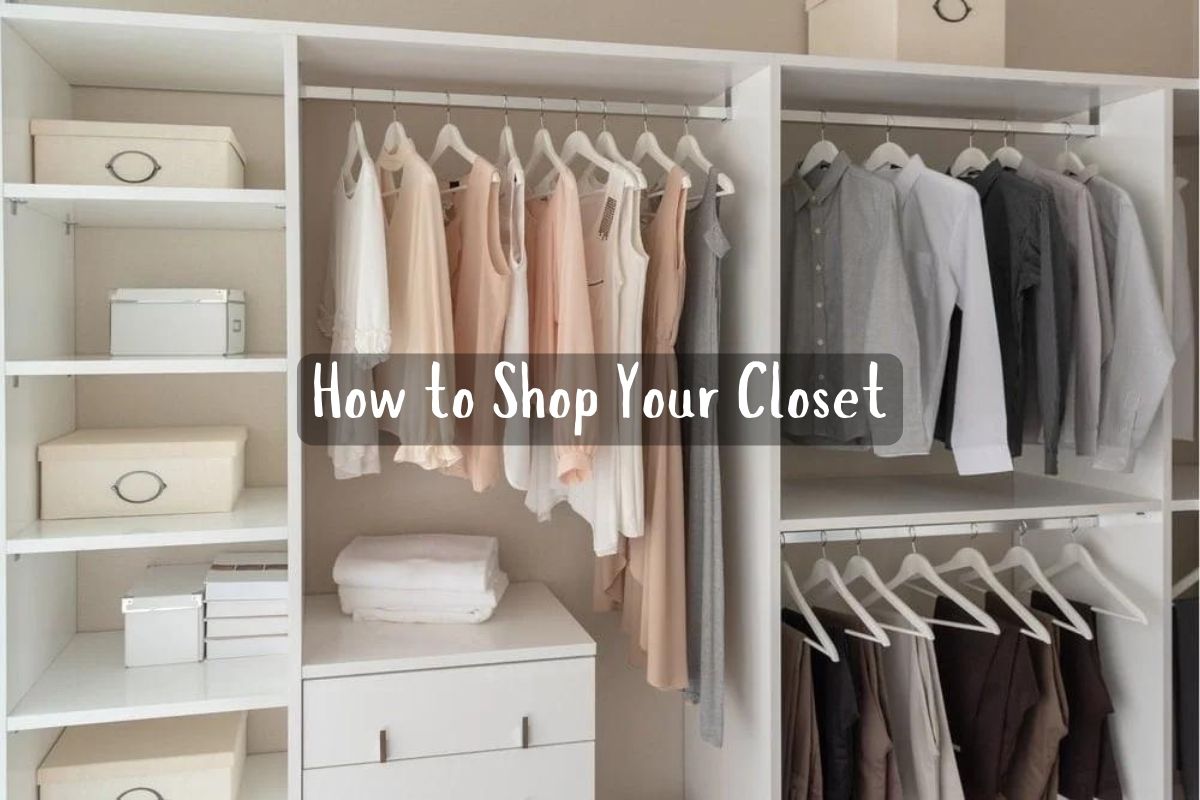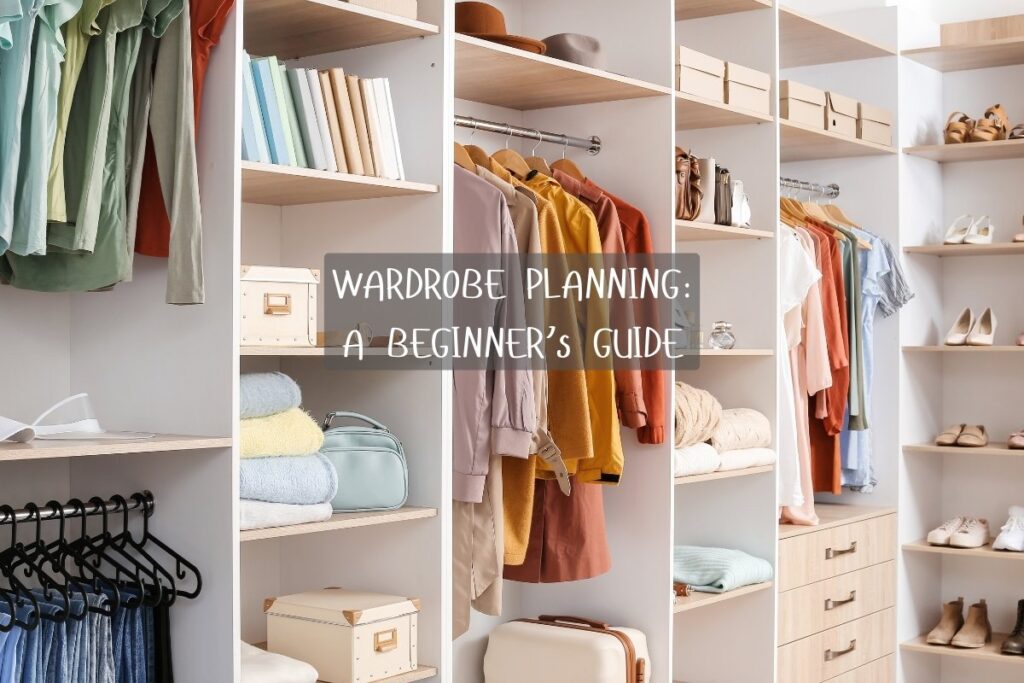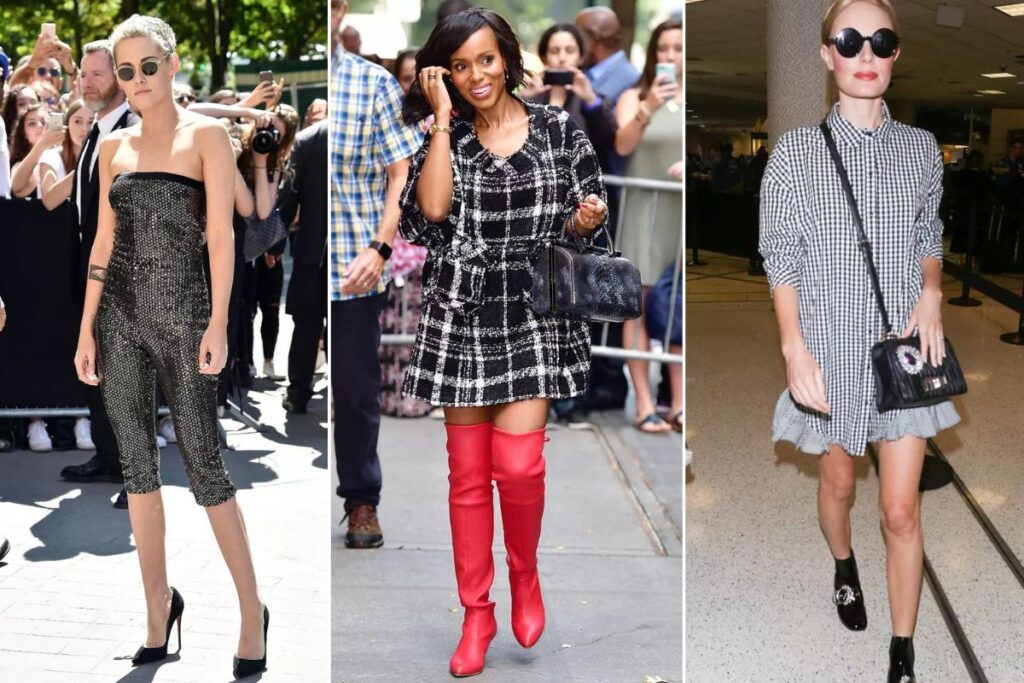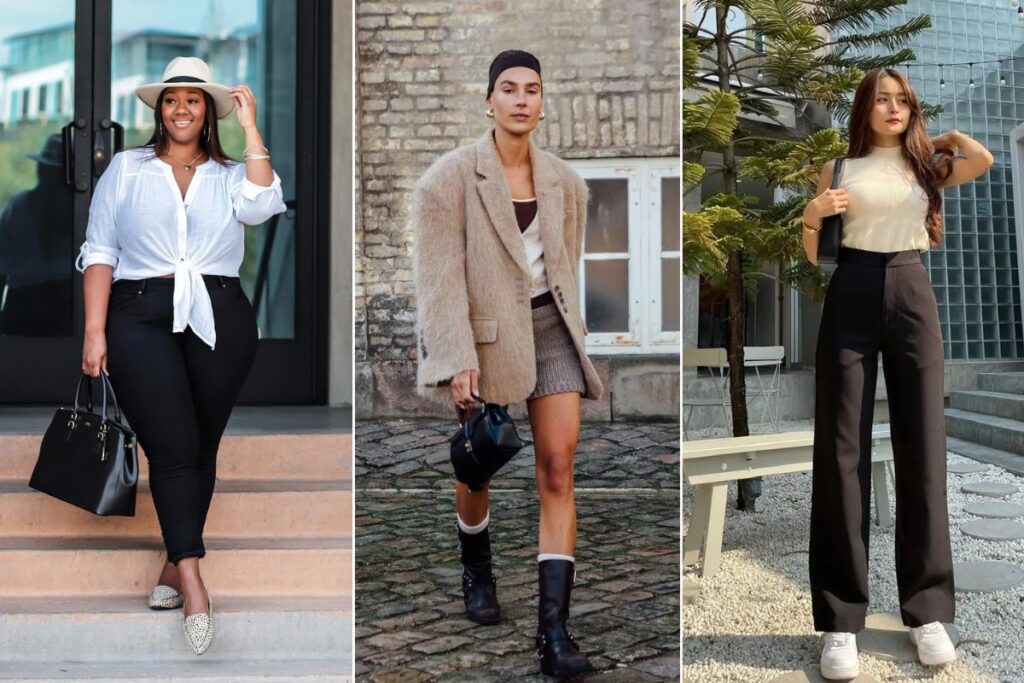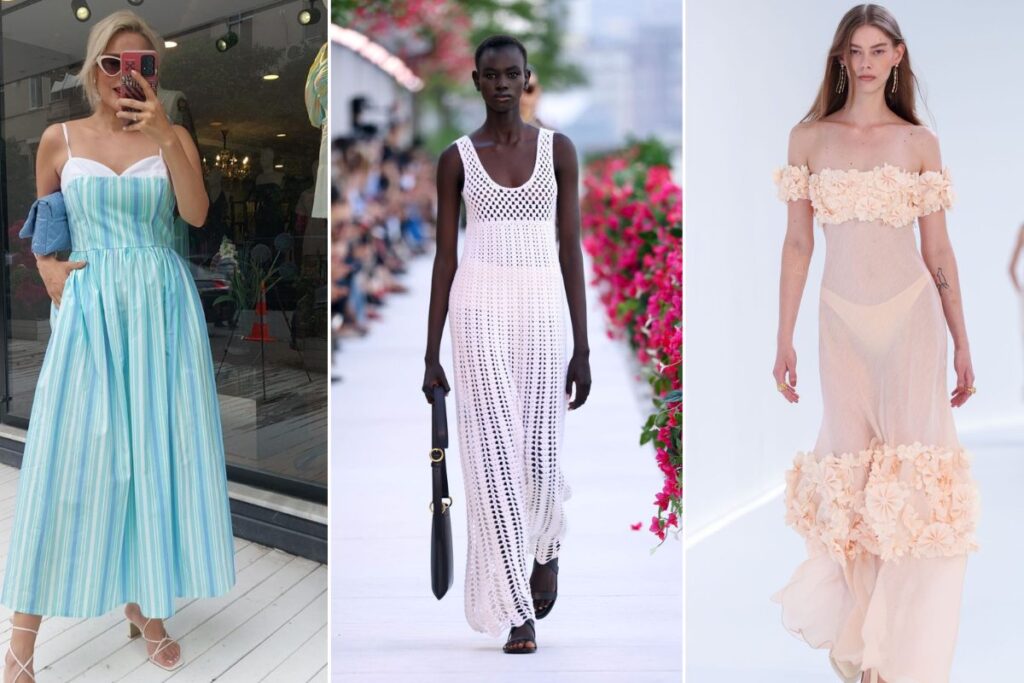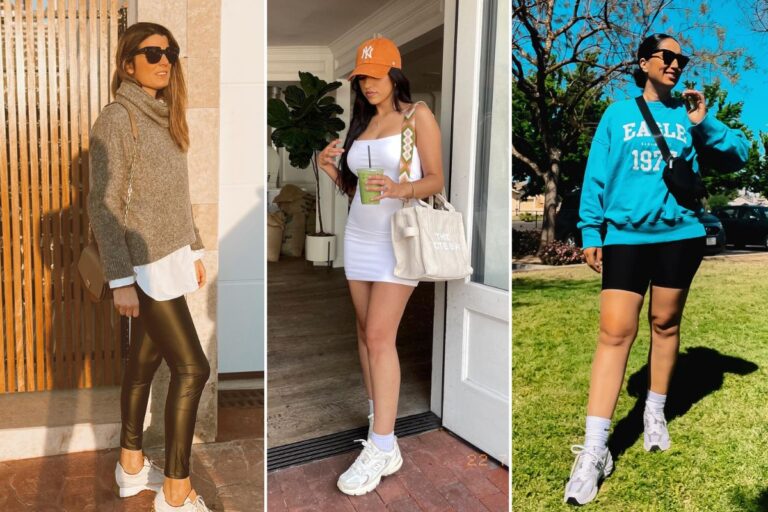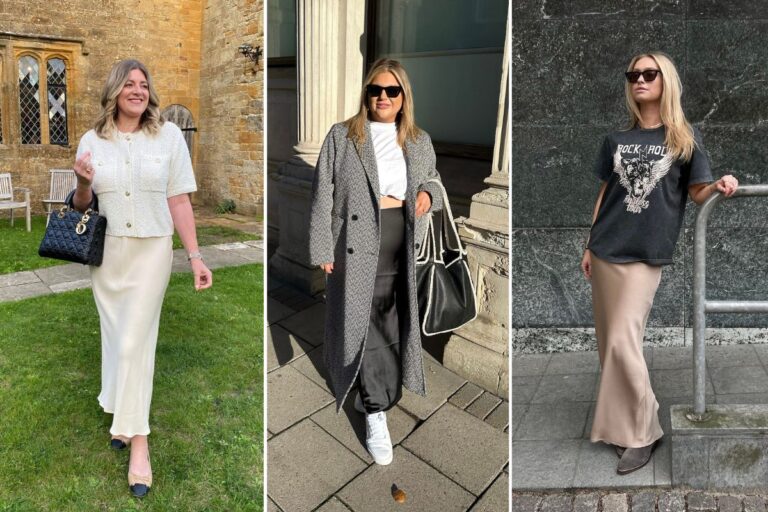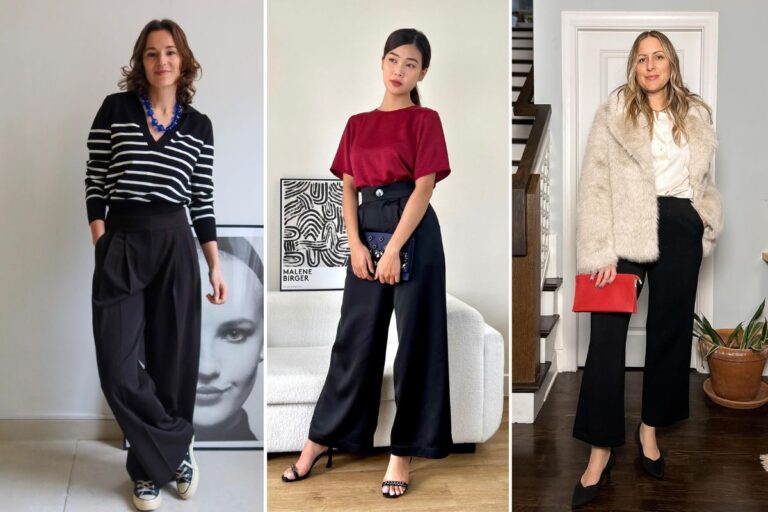I used to be obsessed with buying the latest fashion trends. My closet was overflowing, yet I felt like I had nothing to wear. The constant pursuit of new pieces was draining my wallet and harming the planet.
That’s when I realized I needed to change my approach. Learning how to effectively shop your own closet can transform the way you view and style the items you already own.
While it takes some work upfront, learning how to shop your closet in a more intentional way is a game-changer. From decluttering and building a functional base wardrobe to avoiding style ruts and identifying gaps to fill, this approach changed my mindset and my morning routine.
If you’re looking to revamp your closet, try these tips to start dressing sustainably, cut down on clutter, and reinvent your personal style without constantly buying new pieces.
Declutter and Organize
The first step to shopping your closet is tackling the chaos. You can’t reuse pieces you love if you don’t know what you have or you can’t find items buried under piles.
Dedicate time upfront to edit down, get ruthless about purge items, and create a detailed wardrobe inventory. This process seems tedious but is essential for creating closet order.
The Closet Purge
Pull everything out of your closet and dresser and pile it all on your bed. Yes, everything. Then sort into “Love”, “Donate/Sell”, and “Maybe” piles.
Be utterly ruthless and honest with each item. I put on and evaluate every single piece when I do this, which takes hours but is worth it. If you haven’t worn something in over a year, it likely needs to go.
Be merciless with the “Maybe” pile and avoid tossing too many items here. Anything you’re uncertain about should probably be donated or sold.
If items don’t fit properly, are low quality, damaged, or no longer your style, don’t keep them around with some vague notion you “might” wear them someday. Take the plunge and let them go.
Create a Wardrobe Catalog
Once I had pared down to a reasonable amount of items I loved, I took inventory of exactly what remained. Grab a notebook or use an app to catalog every item you’re keeping by category – tops, bottoms, dresses, outerwear, etc.
Note colors, fabrics, brands, when/where it was purchased, how much wear is left, etc. This creates a detailed wardrobe database.
Doing a catalog helps identify gaps where you may lack essential pieces. See if you are missing foundational basics like jeans, simple tees, a black blazer, etc.
Assess if you need to invest in better quality replacements for worn items. Be sure to keep this inventory updated whenever you add or remove items.
Restyle What You Have
With a clean slate, you can start falling back in love with pieces you already own. Shop by pulling items just for the current season to the front and get creative with new combinations.
Accessorize differently to give forgotten items new life. Doing a closet switch every 3-4 months keeps things fresh.
Showcase This Season’s Pieces
Once you’ve purged and organized your closet, do a seasonal rotation. Pull out heavy winter coats or sundresses and store until next year.
Shop only what’s relevant for the current weather. Limiting yourself to fewer pieces at once helps provide that “new clothes” feeling without buying anything.
I store off-season items in breathable cotton storage bins under my bed. Use cedar blocks in winter gear to prevent moths. Having last year’s pieces out of sight means you get excited to swap them back in next season.
Mix and Match New Outfit Combinations
Challenge yourself to style familiar pieces in new ways. Try pairing tops with bottoms you don’t normally wear together. A button-down under a sweater can make it office-appropriate.
Mixing a feminine lace cami with menswear trousers toughens up the look. Getting creative with unexpected outfit combinations makes getting dressed more fun.
Don’t be afraid to blend dressy and casual items, either. Throwing on heels and a blazer with jeans instantly polishes the look.
Mixing an oversized sleep shirt with structured leather pants balances out proportions. Experiment until you find magic combinations that feel fresh.
Accessorize Differently
Accessories instantly transform basics you already own. Drape a scarf over a tee and jeans for instant French girl chic. Statement earrings and a cuff modernize a simple LBD. Tall boots give a sundress added edge and versatility beyond warm weather.
Try styling safe outfits with a new bold lip color outside your comfort zone. Switch out your typical gold jewelry for silver or vice versa.
Simply changing how you accessorize can make you feel like you’re wearing a brand new outfit even when the foundation remains the same.
Build a Versatile Base
Having a solid wardrobe foundation of high-quality essentials makes getting dressed effortless. Timeless staples in neutral colors transcend trends and seamlessly mix and match.
Invest in pieces that transition across seasons. The key is ensuring variety and balance.
Invest in Versatile Essentials
Build your wardrobe around versatile basics like crisp white button-downs, well-fitting jeans in dark washes, soft cashmere sweaters in neutral tones, and Little Black Dresses. These classic, minimalist pieces act as anchor points and pair well with bolder accent items.
Focus on finding investment pieces made from luxe, durable fabrics like wool, silk, and 100% cotton. They’ll last for years as long as you properly care for them. I still wear silk shirts I bought a decade ago because I invested in quality.
Choose versatile colors and aim for more solids than prints. Having too many loud patterns makes mixing and matching trickier.
Start with black, white, gray, denim blue then branch into camel, olive green, navy. Build up neutral basics before adding louder colors and prints.
The Closet Math
I use a simple math formula when shopping my closet: aim to have at least 3 tops for every bottom. This ensures you can create multiple fresh outfit combinations. Any less and you risk repeating looks too quickly.
The same rule applies for shoes – make sure you have at least 3 pairs that work back to most outfits. I have casual sneakers, brown riding boots, and classic black pumps as my core shoe wardrobe. Then I sprinkle in trendier shoes as budget allows.
When adding new pieces, consider versatility. Can it transition across seasons? Does it pair with other items you already own? Can it be dressed up or down? High cost-per-wear pieces that work hard in your wardrobe are smart investments.
Sprinkle in Personality
Style is personal. Once you’ve built a solid foundation of versatile essentials, add accent pieces that express your individual taste and personality. Maybe that’s an edgy moto jacket, a pair of funky statement earrings, or one of those trendy handbags all the influencers have.
I allow myself a couple new trendy accessory purchases per season without going overboard. That scratch-the-itch feeling dissipates quickly once I get it home and style it with my existing wardrobe.
Sprinkle in these fun additions judiciously to keep your look current without breaking your budget.
Create a Lookbook
Snap photos of favorite outfits you style to easily recreate them later. Having a personal lookbook helps capture inspiration before it fades from memory. You’ll also quickly identify gaps when struggling to build a new look.
Take Outfit Photos
I know I won’t remember the details of every cute outfit I style. So I started a folder on my phone dedicated to documenting my favorite looks whenever I feel extra confident.
Before walking out the door, I’ll take a quick mirror selfie or have my husband snap a photo.
When I need inspiration getting dressed, I scroll through my personal lookbook pulling up shots from previous weeks.
I have recreated so many great outfits just by referring back to photos for the exact shoes, bag, jewelry etc I paired it with originally.
Inspiration Boards
Beyond photos of myself, I also keep digital inspiration boards on Pinterest. I pin looks from street style blogs, magazines, and celebrities that catch my eye. This helps me identify patterns – like if most pins have leather jackets for example – indicating I should buy one to elevate my fall wardrobe.
I also keep a small corkboard inside my closet door pinned with actual magazine tears, lookbook printouts I’ve annotated, and even fabric swatches.
This analog approach complements my digital inspiration board nicely when I’m standing inside my closet seeking ideas.
Avoid Style Ruts
It’s easy to end up in a wardrobe rut, wearing the same few outfits on repeat. Break the habit by reimagining loungewear essentials, properly caring for items between wears, and solving fit issues prolonging their lifespan.
Implementing a few simple strategies keeps clothes looking their best so you stay excited to wear them.
Finding the Comfort/Chic Balance
I will admit I fell into the trap of buying too many pairs of stretchy pants and oversized sweatshirts when working from home. Loungewear is comfortable but styling it is tricky. The key is balance. Elevate loungewear by tucking in sweatshirts and adding structured accessories like a sharp blazer or heels.
Invest in elevated basics made from high quality materials like modal or cashmere with tailored cuts. They’ll feel just as comfy as sweats but polish up nicely.
I also incorporate more blouses and knits versus basic tees for a put together vibe even when opting for stretchy bottoms.
Laundry Strategies
Most clothes end up donated simply because they are stained, wrinkled or have shrunk from improper care. Read clothing labels and actually follow washing instructions.
I used to throw everything in the wash together out of laziness. Now I take the extra time to hand wash or dry clean delicates and line dry items prone to shrinking.
While it takes a little more effort, properly caring for clothes helps them last exponentially longer looking like new.
Investing in a handheld steamer also does wonders for reviving wrinkled items between wears rather than washing frequently. Implementing these laundry best practices makes even old items look fresh.
Flattering Fit Solutions
An otherwise gorgeous top relegated to the donation pile because it was slightly too small motivated me to get creative with making pieces work.
Now I immediately take ill-fitting items to the tailor rather than discarding them. Letting out seams or hemming overlong pants restores their wearability.
If something is very oversized, take it in yourself by strategic pinning and stitching darts. Adding bra strap holders, slimming waist ties, or inserting bra cups helps customize the fit.
If you love something but the size just isn’t right, explore alteration options before replacing it.
Shop Mindfully
Shopping your closet ties closely with my journey towards more sustainable and ethical fashion habits. I still purchase new investment pieces to fill obvious gaps, but with much more intention. The key is avoiding impulse purchases and focusing on quality over quantity.
Identify Wardrobe Holes
I shop secondhand regularly now, but when I do want something new, I’m very selective. After browsing my wardrobe catalog and digital inspiration boards, I make a list of holes to fill.
Do you lack a proper winter coat or a go-to dress for date night? Identify precise gaps so purchases are intentional investments versus impulse buys.
Before purchasing anything new, I dig through my closet first trying endless combinations to make it work with what I already own.
This little rule keeps my spending in check! Only once I’ve exhausted all options do I seek out something new.
Ethical Considerations
The fashion industry seriously harms the planet through pollution, exploitation of garment workers, and rampant waste. I try to shop consciously from ethical brands focused on sustainability.
I use apps to research companies and only buy from those aligning with my values around fair wages and eco-friendly materials.
Buying secondhand is another great option allowing you to shop sustainably on any budget. Online thrift stores like ThredUp make sorting through endless options easier.
Vintage and consignment shops offer curated pieces in excellent condition. Clothing swap parties with friends is also fun!
Quality Over Quantity
I invest in higher quality, ethically made staples I’ll wear for years over cheap disposable fashion.
Pay attention to fabric, construction, and hardware details when assessing investment pieces. Be sure to properly care for them as well – quality garments should last a decade or more.
It’s tempting to give into fast fashion’s constant new inventory drops. But restricting purchases forces me to shop my closet more creatively.
When I truly need to fill a gap, I buy better quality items from responsible brands I know I’ll wear repeatedly for years to come.
Conclusion
Learning how to effectively shop my own closet before mindlessly buying something new transformed my wardrobe and my outlook on fashion. The initial investment organizing and cataloging was worthwhile for the payoff editing down to pieces I genuinely love and wear.
Getting creative combining items sparked my personal style. Curating a closet of ethical quality staples and unique accent pieces that spark joy minimizes excess waste.
Shopping your closet ties closely with developing sustainable fashion habits through reimagining items you already own. Implementing a few simple strategies keeps your wardrobe feeling fresh.
Take the time to declutter, build a functional base, and catalog what you have. Rediscover forgotten pieces and combine them in new ways. Snap photos of favorite looks you style to recreate later.
Properly care for garments between wears. Make intentional purchases only after identifying precise gaps in your wardrobe inventory.
Adopting this mindful approach to shopping your closet reduces waste, saves money, and boosts your confidence. You might be surprised just how many new outfits you can create with items already hanging in your closet!
